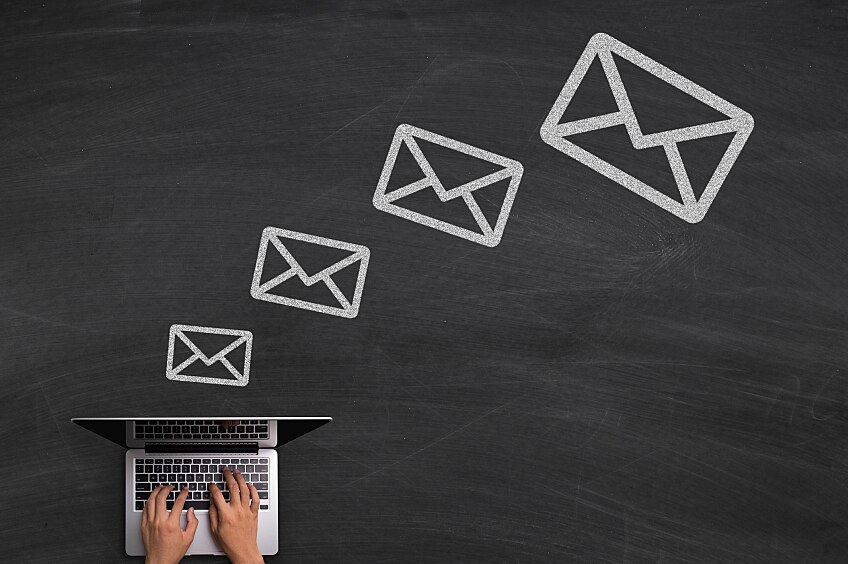
With nine out of 10 Americans using email, it's a great way for contractors to reach and engage with potential customers.
Email can help your business generate qualified leads that could turn into customers-but shooting off random marketing emails could repel potential customers rather than attract them. That's why your business needs a lead nurturing strategy. A thoughtful strategy will allow you to engage prospects with relevant messages that encourage them to seek out your services or schedule a consultation for a roofing estimate.
Here's how you can develop an effective email marketing strategy to keep your pipeline full of potential leads.
Why Email Leads Are Important
Email marketing offers a variety of data points about how potential customers engage with the messages you send them. For example, do they actually open your emails? If so, what do they click on? What follow-up actions do they complete, such as booking an appointment? Setting up a booth at a local expo or hanging fliers in your neighborhood can't deliver these kinds of metrics.
But to get customers' email addresses in the first place, you have to offer them something of value that will compel them to share their information.
One strategy is to launch a blog that features content that helps property owners understand their roofs. Topics like avoiding roof water damage or winter maintenance tips can get eyes on your website. Once you create your blog, you can promote it on social media, encourage people to subscribe, and then send them email updates when you post new content.
If a blog is too big a time commitment, you could start a monthly email newsletter filled with quick construction or home repair tips and special offers, such as a discount for new customers who book their project by a certain date. You can also share content from the GAF Roof Views blog with your audience.
While you can collect customer emails in several ways, just remember that it has to be a fair trade. Your recipients should feel that the content you send them gives them the knowledge they need to solve a problem or better take care of their property. You should also give them the option to unsubscribe from receiving future email.
How to Develop a Lead Nurturing Strategy
To develop a solid lead nurturing strategy, you need to understand the buyer journey, or how your customers typically come to make a purchase. At a fundamental level, the buyer journey includes three key stages:
- Awareness: In the awareness stage, a customer identifies a challenge they need to address and begins researching potential solutions.
- Consideration: During consideration, they research to gain a better understanding of their challenge and start comparing various specific approaches to solve it.
- Decision: Finally, they decide on the best approach and narrow down a list of companies or service providers who can best meet their needs.
It's important to understand each of these stages as you develop your lead nurturing strategy, and align the content in your emails with the corresponding stage. You'll be able to better understand where your customer is in their buying journey by looking at the available metrics from your lead nurturing emails and campaigns.
When you first get a customer's email, it might be best to send them a welcome message or some introductory content that showcases how you can be of service to them. For example, if you're marketing to a commercial client, this email might include information on the latest building and fire code updates in your municipality, or the latest trends in green building.
If a prospect opens and clicks through the first couple of emails you send them, this may be a good sign to keep sending them messages on a weekly or monthly basis. Doing so should nurture the relationship and move them closer to a conversation with your sales team.
Once they move into the later stages and get closer to making a decision, consider sending them emails that cover topics like how to set a budget for your project, how to compare contractors, and the pros and cons of different financing options for your project.
It's also crucial to be mindful about how often you communicate with potential customers as you develop your email strategy. If you notice a large number of subscribers opting out or your email open rates begin to dip, it may mean you're sending emails too frequently or that the content just doesn't resonate with your audience. If so, make sure you've segmented your email list appropriately. For example, create separate lists for residential and commercial customers. And make sure your emails aren't too long, have an engaging subject line, and reflect tailored messages for different audience segments. The segments might include how well they know you, such as new customers and returning customers, or might reflect how you came to know them such as cold canvassing or referrals.
Tips for Creating CTAs That Convert
Sometimes your customers need a helping hand in moving from one stage of the buyer journey to the next. Calls-to-actions-or CTAs-are key parts of an effective email marketing strategy.
CTAs tell your readers what step you'd like them to take next, such as "Learn more," "Schedule a consultation," or "Download our guide." An effective CTA strikes a balance between creating a sense of urgency without being too "salesy." For instance, an email CTA that urges prospects to "Book your project today" might be too presumptuous-especially if they've never done business with you before. They need more information to make their buying decision, so "Learn more" or "Schedule a call" might be more effective. However, sometimes potential customers just need a little nudge, so lead nurturing emails that contain CTAs with special offers or discounts, like "Get 10 % off today" might help you close a sale.
Whatever CTA you choose for a given email, it should be actionable and highly visible. Consider putting the text in bold or adding a special button that prospects can click. If you're using email marketing software, almost all of them offer this feature, so you don't have to worry about designing a CTA button yourself.
Fine-Tune Your Email Strategy
Marketing emails are an effective way to acquire and nurture leads. You just need to develop the right strategy, which starts with creating quality content that engages and informs potential customers. The next step is promoting this content so prospects see it and feel interested enough to subscribe with their email address.
Fortunately, you don't need to be a marketing expert to master lead nurturing best practices. You can use your years of experience working with customers to develop relevant messaging that helps you attract more prospects and fill your pipeline for months to come.



